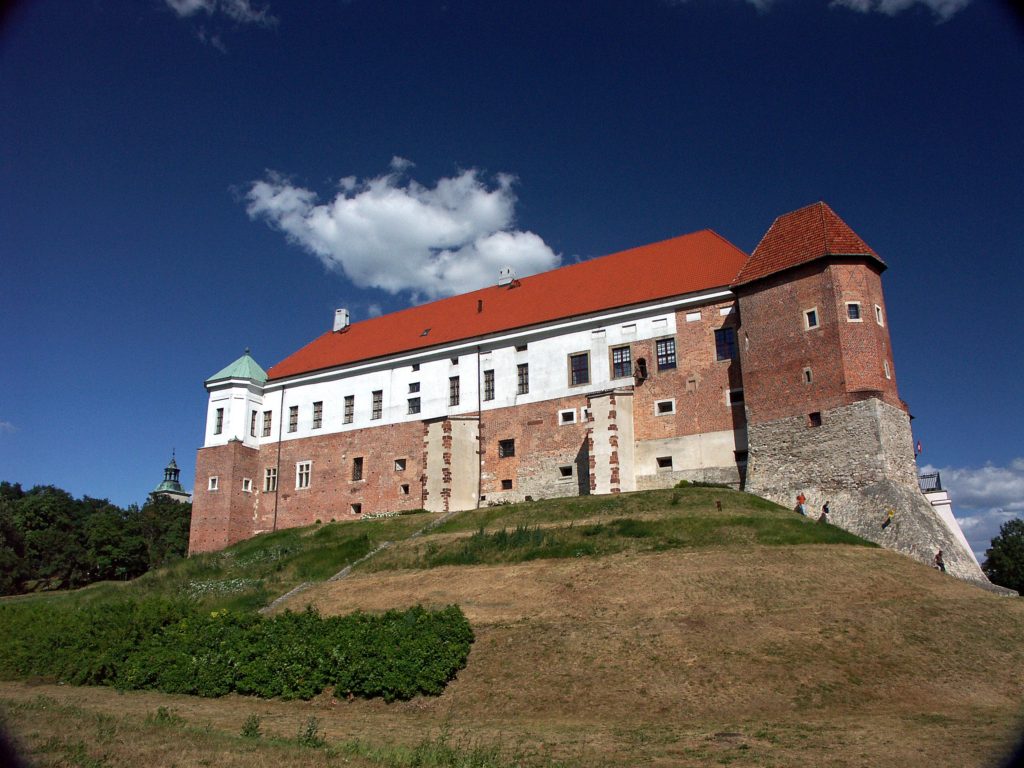
ENGLISH | POLISH
SANDOMIERZ ROYAL CASTLE
An original wooden fortress in Sandomierz was built on a hill near the Vistula River already in the 10th century, during the early period of the Piast rule. Sandomierz became a capital of an independent principality in 1138, in the aftermath of the will of Bolesław the Wrymouth who divided his state between several sons. Consequently, the town, serving as a permanent residence of local princes, had to be extended. Henryk of Sandomierz, Casimir the Just, Leszek the White, Bolesław the Chaste and Leszek the Black were among the monarchs who lived in the Castle as rulers of the Duchy of Sandomierz. However, the town and the Castle were destroyed and their inhabitants massacred during the Tatar invasion in 1260. New stone and brick fortifications on the ruins of the former fortress were built only in the 14th century by Casimir the Great, king of the reunited Polish kingdom. The Castle of Sandomierz was one of 32 castles built by the king in order to strengthen the country’s defence system. At that time Sandomierz was a significant centre of administrative power in Poland due to its geographical proximity to Ruthenia.
A significant renovation in the Renaissance style took place during the reign of king Sigismund the Old in 1520. The work was supervised by the German architect Benedict of Sandomierz, who was also responsible for the Renaissance refashioning of the Wawel Castle in Krakow. The works continued during the reign of king Sigismund II Augustus. In 1656, the Castle, which consisted of four wings enclosing an arcaded courtyard, was blown up by the Swedish troops. Only the western wing survived and it was rebuilt into a free-standing palace-type building during the reign of John III Sobieski in the years 1680-1688. The Castle was destroyed by the Russian troops which stationed there in 1768, during the Confederation of Bar.
After the third partition of Poland (1795), the Austrian occupant designated the Castle for use as a court and a prison. However, the prison was inaugurated only in 1825 when the city belonged to the Kingdom of Poland (a semi-independent state in personal union with Russia, established in 1815). The reconstruction of the Castle’s interior began at that time with the conversion of its grand rooms into smaller ones. In 1844, the eastern facade was redesigned in the neoclassical style. At the end of the 19th century a semi-circular courtyard was enclosed by a new single-storey crescent-shaped prison wing. Also, the prison was surrounded then by a new outer wall.
Despite the fact that Poland regained independence in 1918, and in 1932 the Castle became officially listed as a historical monument, the prison was housed in it until 1959. The Castle served that purpose also during the German occupation of Poland during the Second World War and the subsequent era of Stalinism. Afterwards, the nearly 30 year-period of construction and conservation work ensued. In 1980 the 19th century prison administrative building was blown up and the crescent-shaped building demolished. The Castle Museum in Sandomierz has been housed in the Castle since 1986.
The Castle Museum in Sandomierz
The Castle Museum in Sandomierz owes its origins to the commitment and initiative of Stanislaw Karpowicz, rev. Andrzej Wyrzykowski, Józef Pietraszewski and Zdzisław Lenartowicz. They were members of the Sandomierz branch of the Polish Tourist Society. The opening ceremony of the Museum (originally known as the Museum of Sandomierz Land) took place on 5 May 1921.
Since then, the Museum has carried out constant research on the local and national heritage of Sandomierz and its environs. The Museum is a cultural institution that works for the preservation and promotion of historical monuments and other remnants of the past. It is involved in recording history of the region and its cultural transformation over the centuries, supervising different projects related to these topics. It also undertakes activities related to art in the broad sense of the term, including concerts, theatre performances, etc.
SANDOMIERZ
Sandomierz is nowadays a small town of unusual scenic beauty, situated on seven hills (hence it is often called a ‘little Rome’) on the border of Sandomierz Basin. Among its natural landmarks there are the Pepper Mountains (a nature reserve), numerous loess gorges (including the popular Queen Jadwiga Gorge) and the picturesque Vistula River valley. Several hiking and cycling trails run through the town (Cistercian trail, literary trail, St. James trail, Via Jagiellonica and Wooden Architecture trail).
The town is also an important cultural and economic centre. Even half a million tourists visit Sandomierz every year. Its medieval churches, the Old Town and the Royal Castle are the main tourist attractions. There are about 120 listed historic buildings in Sandomierz.
